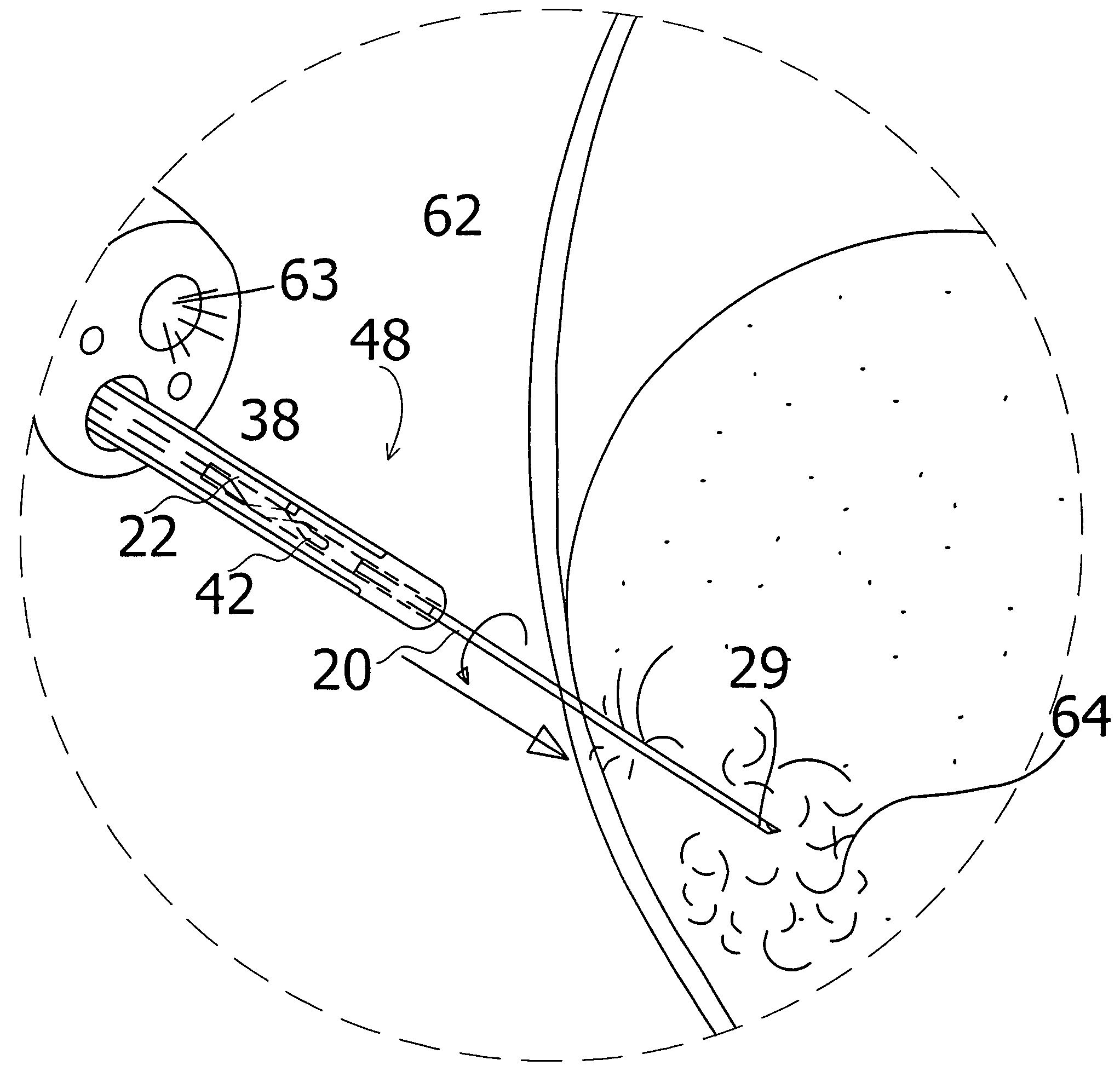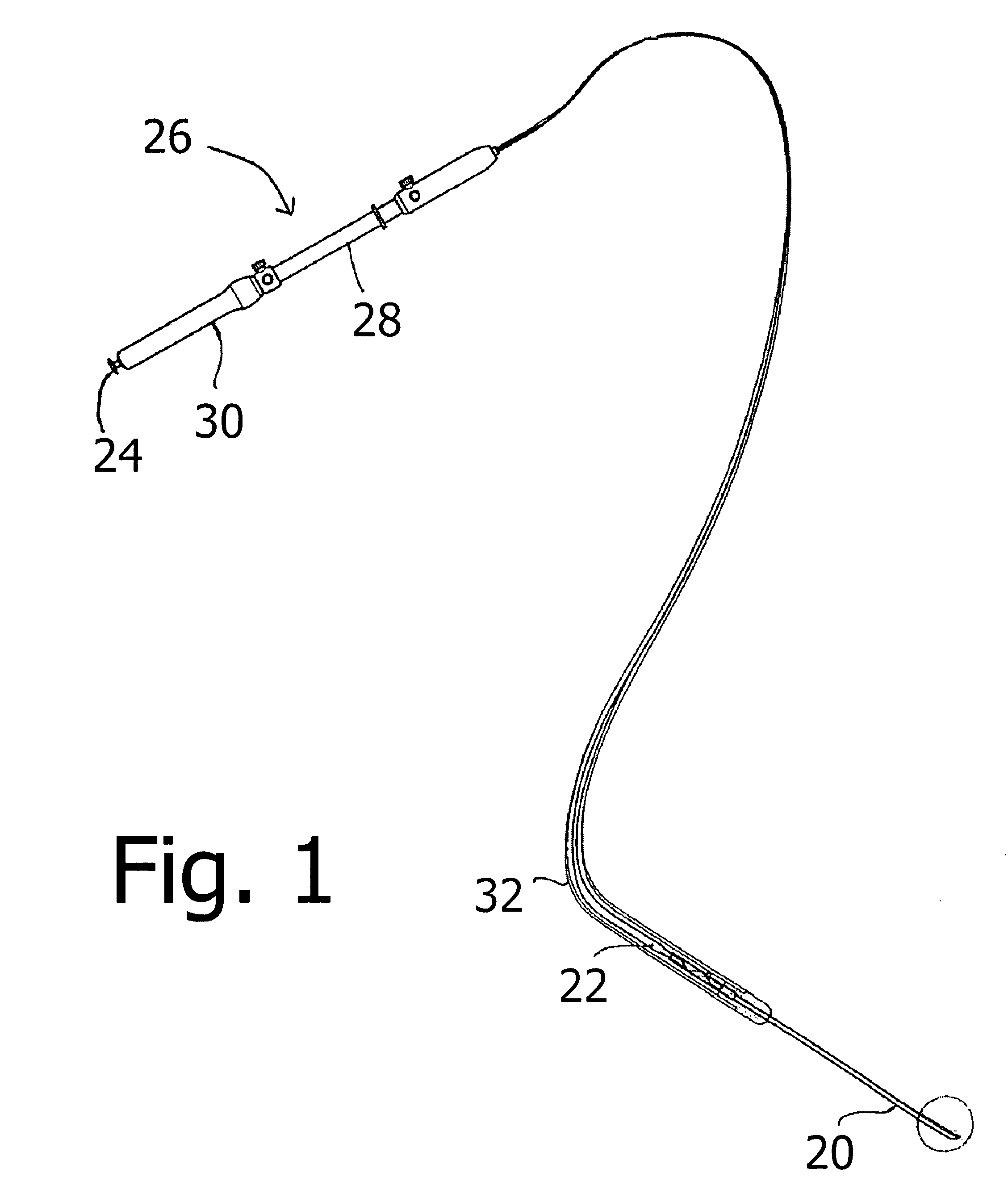Rotating fine needle for core tissue sampling
a core tissue and fine needle technology, applied in medical science, surgery, vaccination/ovulation diagnostics, etc., can solve the problems of difficult aspiration of a sample from a solid mass, inability to remove the necrosis of the pancreas, and traumatic procedures, etc., to facilitate the collection of a core biopsy.
- Summary
- Abstract
- Description
- Claims
- Application Information
AI Technical Summary
Benefits of technology
Problems solved by technology
Method used
Image
Examples
Embodiment Construction
[0051]As illustrated in FIG. 1, a medical instrument assembly for use in procedures for obtaining tissue samples comprises a hollow needle element 20 communicating with a lumen (not shown) of a tubular shaft member 22 to enable suction of a patient's tissue to be obtained by needle 20. Tubular shaft member 22 is provided at a proximal end with a port 24 that communicates with the lumen of the tubular shaft member. As disclosed below with reference to other embodiments, needle element 20 may be an integral distal tip of shaft member 22.
[0052]The instrument assembly of FIG. 1 includes an actuator subassembly 26 including a cylindrical body portion 28 carrying a slidably mounted shifter 30. Shifter is connected to tubular shaft member 22 for moving the tubular shaft member alternatively in the distal direction and the proximal direction through a flexible tubular sheath 32 that is fixed at a proximal end to cylindrical body portion 28. Sheath 32 has a sufficiently small diameter to ena...
PUM
 Login to View More
Login to View More Abstract
Description
Claims
Application Information
 Login to View More
Login to View More - R&D
- Intellectual Property
- Life Sciences
- Materials
- Tech Scout
- Unparalleled Data Quality
- Higher Quality Content
- 60% Fewer Hallucinations
Browse by: Latest US Patents, China's latest patents, Technical Efficacy Thesaurus, Application Domain, Technology Topic, Popular Technical Reports.
© 2025 PatSnap. All rights reserved.Legal|Privacy policy|Modern Slavery Act Transparency Statement|Sitemap|About US| Contact US: help@patsnap.com



